
The Top 20 Brand Leaders in Voice 2019
Today, Voicebot launched a list to recognize the top brand innovators in voice today. A growing number of companies have recognized that voice is a powerful tool for interacting and engaging with their audience thanks to the rapid adoption of voice-first devices like smart speakers over the past few years. However, readers frequently ask how they can use voice to engage with their target audience and what are others doing to achieve this? Our Top 20 Brand Innovators in Voice is designed to inspire those who are looking to start or improve a voice program of their own by providing specific use cases across ten different consumer-facing industries.

FINANCIAL SERVICES
Bank of America
WHY THEY MADE THE LIST // Bank of America app users have access to Erica, a voice-activated virtual financial assistant. Erica is notable as one of the new voice assistants launched by a brand and also because of its rapid consumer adoption. According to BofA, Erica has assisted 7 million users as of May 2019 and completed over 50 million “client requests.” Monthly active users exceed 500,000. The BofA app is ranked #8 in the finance category within the app store. Erica both understands spoken request and can respond audibly using natural language generation. It also illustrates, user comments confirm, how mobile apps can benefit from voice navigation making it easier to find features that are hidden in nested menus. Bank of America has not ventured into other voice platforms to date, but Erica’s strong debut and user base make it a model for how brands can employ custom voice assistants to provide more value to customers.
VOICE APP DEVELOPER: Bank of America
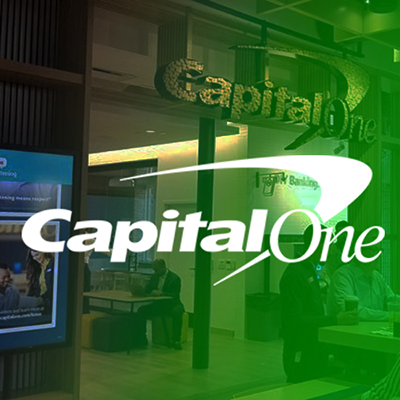
FINANCIAL SERVICES
Capital One
WHY THEY MADE THE LIST // As one of the early adopters of voice banking in March 2016, Capital One was the first bank to launch an Amazon Alexa skill. The skill allows customers to pay a bill, check balances, and inquire about recent transactions and payment due dates. The following year, Capital One launched its own intelligent assistant bot named Eno which is accessible by voice and text through the company’s mobile app and website as well as through text messaging. Eno is among the first conversational assistants introduced by a brand and Capital One continues to invest in expanding its feature set. Voicebot caught up with Margaret Mayer, Managing Vice President, Messaging, Conversational AI & Emerging Technologies at Capital One, for an interview in June. Listen to the podcast here.
VOICE APP DEVELOPER: Capital One Services, LLC

FINANCIAL SERVICES
TD Ameritrade
WHY THEY MADE THE LIST //
TD Ameritrade has often made a point of being a leader in new technology adoption when it comes to better service for clients. For instance, it was among the first investment service to offer voice-activated trading and stock market information when its Alexa skill debuted in March 2017. It was the first to offer voice-activated stock trading via Amazon Alexa-enabled devices last year. This summer the investing giant brought investor trading information to cars via voice by integrating its news services into Apple CarPlay, Android Auto, and Echo Auto platforms. To complement their existing Alexa skill, TD Ameritrade launched a Google Assistant Action earlier this month. The launch clearly targeted existing customers but even without an account, you can access some basic information about the stock market and sector performance.
VOICE APP DEVELOPER: TD Ameritrade

AUTOMOTIVE
Mercedes
WHY THEY MADE THE LIST // During the 2019 Super Bowl, one of the most watched televised events of the year, Mercedes focused an entire commercial around its MBUX voice control system. The first 44-seconds of the one minute ad were dedicated to fantastical use cases of a man asking questions using the phrase “Hey Mercedes.” The car was visible only in the final 15 seconds of the spot and even then, the focus revolved around an interaction with Mercedes’ assistant. This comes two years after Mercedes became the first automaker to offer both Amazon Alexa and Google Assistant integration. Last year SoundHound’s Houndify voice platform integrated into Mercedes-Benz A-Class vehicles on the North American market. The Houndify integration complements MBUX’s locally installed voice capabilities provided by Nuance with access to information and services outside of the car. Mercedes says the SoundHound integration enables some more complex use cases. Its focus on delivering a customer branded assistant with integration to popular consumer assistants is providing a template for other automakers and brands to follow.
VOICE APP DEVELOPER: Mercedes-Benz

MEDIA
BBC
WHY THEY MADE THE LIST // BBC has been active in supporting Amazon’s Alexa voice assistant, even winning two Webby Awards this year for their skills Good Food and BBC Kids. They also have a few Actions available to users on Google Assistant and at least eight Alexa skills in total, including games such as BBC History Quiz and the Inspection Chamber. The Brisitsh Broadcasting Company (BBC) is also a default news provider for both Alexa and Google Assistant in the UK. BBC has recently focused on asserting more control over how its content and user experiences are made available to consumers. In March, the organization began denying access to Google search for its podcast content reserved for the BBC Sounds mobile app. Last month, BBC announced that it will launch a new voice assistant in 2020 that has the working name “Beeb,” a common nickname for BBC in the UK. Beeb will be optimized to access BBC content and support customer use cases in a way that Alexa or Google Assistant will not. Its multi-faceted approach to voice strategy offers insight into the many decisions media organizations must consider when fully embracing voice AI.
VOICE APP DEVELOPER: BBC and Immediate Media Co.
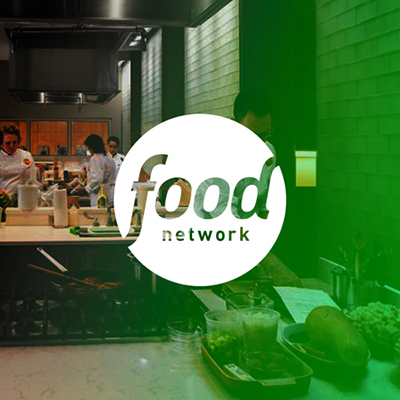
MEDIA
Food Network
WHY THEY MADE THE LIST // Food Network not only has one of the best voice-first Alexa skills and Google Assistant apps, but also represents one of the finest multi-modal deployments that takes advantage of the Amazon Echo Show’s screen to display Food Networks’ extensive video library. Discovery Inc., owner of Food Network, has also launched a multi-modal Google Assistant Action for Food Network and a Facebook Chatbot. In April 2019, Food Network had celebrity chef Rachael Ray take over its Alexa skill as part of the official kickoff of 30 new episodes of the “30-Minute Meals” television program. Food Network offers media organizations insight into how visual content can be repurposed for voice and audio-only interactions, strategies for employing voice-first multimodal engagements, and how to integrate voice apps with new television programming. Last year Voicebot chatted with Tim McElreath, Director of Engineering, Mobile and Emerging Platforms at Discovery Inc. (then Scripps before a corporate acquisition). Listen to the podcast here.
VOICE APP DEVELOPER: Discovery Inc.

ENTERTAINMENT & GAMES
Activision – Call of Duty
WHY THEY MADE THE LIST // Game maker Activision decided to employ Alexa to augment one of the most popular video games worldwide, Call of Duty: WWII. The skill goes well beyond a simple information service related to the game. It tells you performance stats and whether your friends are online while also offering player tips on how to improve their gameplay. Other video game titles have also launched Alexa skills with various approaches, but Activision considered how the skill could be used to improve gameplay. In that way, the Alexa skill, as a coach, becomes an extension of the product as opposed to a standalone marketing gimmick. Google’s new Stadia online gaming offering is also expected to incorporate Google Assistant into the gameplay as another controller option that can assist users. Other brands should consider whether they can augment their own product experience with the addition of hands-free, eyes-free, voice-interactive solutions whether delivered through their own embedded assistant or employing popular consumer solutions such as Alexa and Google Assistant. This concept has potential well beyond games.
VOICE APP DEVELOPER: Activision
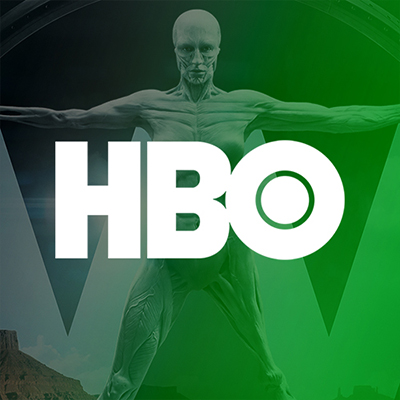
ENTERTAINMENT & GAMES
HBO – Westworld
WHY THEY MADE THE LIST // HBO has collected a series of awards for its immersive Alexa skill Westworld: The Maze, based on the popular television show. The idea of the game was to somewhat recreate what it would be like to explore Westworld, a life-size amusement park where realistic robot hosts interact with guests, albeit using only audio and the imagination. The skill is based on over 260 pages of dialog, 60 unique game paths, and, importantly, 32 ways to die. You die by answering questions incorrectly; questions that only avid show fans can answer. If you are successful, you can complete the game in about 20 minutes, but it took some players up to two hours to find the end of the maze. The skill also required hours of recorded voice actors and authentic sounds, all from the show. Westworld: The Maze won the Grand Prix in Radio and Audio at the 2019 Cannes Lions International Festival of Creativity. The skill was the only voice interactive experience developed by the show, but it provided unique insight into what an immersive experience could look like that was designed solely for super fans.
VOICE APP DEVELOPER: 360i, Xandra
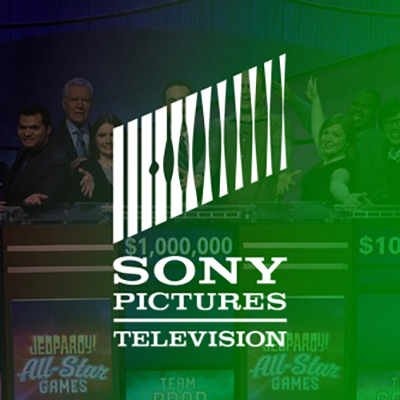
ENTERTAINMENT & GAMES
Sony Pictures Television
WHY THEY MADE THE LIST // Television production company Sony Pictures Television (SPT) is leveraging voice to reach fans in a new way, at any time of the day, while also generating revenue. For decades top SPT programs like Jeopardy! and Who Wants to Be a Millionaire have engaged fans through their televisions because they feel like they can play along with the contestants. Thanks to voice-activated apps, SPT is embracing their fans participating in the games from anywhere. Jeopardy! was SPT’s earliest venture into Alexa skills and is clearly popular amassing over 17 thousand reviews in the Alexa skill store with an average 4.1-star rating. That puts it in the top five of all Alexa skills in terms of total reviews. Jeopardy! was also the first Alexa skill to offer in-skill purchasing (ISP). Users can play one game of six questions for free each day but also have the option of paying $1.99 per month to get double the number of daily questions and the ability to play previous episodes they may have missed. SPT has also launched two other Jeopardy! titles to Alexa for Teens and Sports as well as Who Wants to Be a Millionaire and Ghostbusters. None of these have published to Google Assistant, but SPT did recently launch Jeopardy! in Drivetime’s mobile app which provides voice-interactive games for commuters. SPT’s approach demonstrates how a voice app portfolio approach along with consideration of multiple distribution channels are necessary elements of a comprehensive voice strategy.
VOICE APP DEVELOPER: Sony Pictures Television

ENTERTAINMENT & GAMES
Universal – Jurassic World
WHY THEY MADE THE LIST // Universal Brand Development partnered with Earplay to develop a choose-your-own-adventure game Alexa skill to coincide with the opening of the 2018 movie Jurassic World: Fallen Kingdom. Jurassic World: Revealed is the Alexa skill and it had the benefit of driving awareness for the movie opening as other releases had done previously. However, it also resulted in an entirely new media asset as a standalone game that could be played even without intimate knowledge of the Jurassic World franchise. It borrowed liberally from the story plot lines and sound effects while remaining distinctive. And, it was designed from the beginning to drive revenue. The game has six chapters but only the first chapter was free to play. To continue, users needed to tell Alexa they wanted to purchase the game and spend $3.99 – $4.99 to buy it. The purchase process only took a few seconds. This approach shows how voice apps can go beyond awareness building to representing a new product in a media franchise portfolio.
VOICE APP DEVELOPER: Earplay

CONSUMER PACKAGED GOODS
1-800 Flowers
WHY THEY MADE THE LIST // The flower and gift e-tailer, added an Alexa skill in 2016 that allowed consumers to order flowers and gifts using simple voice commands without visiting their website or picking up the phone. 1-800 Flowers was among the first to participate in voice commerce by creating a transactional skill, and the first in the floral category. A year later the company enabled voice ordering for Google Assistant on iPhone and Androids. Most recently, just in time for Valentine’s Day 2019, the company celebrated another pioneer moment by becoming one of the first retailers to enable voice shopping using Bixby and Samsung Pay. 1-800 Flowers offers insights into a strategy that other brands should consider: be wherever your customers are. The company launched its Alexa skill and Google Assistant Action before there were large user bases for those assistants and has this year done so again with Bixby. Each of these platforms has access to tens or hundreds of millions of consumers and no matter which platform they prefer, 1-800 Flowers has an option for them. In addition, the company didn’t delay the implementation of voice shopping but made it a core feature of its early launch because the goal for them is to drive sales.
VOICE APP DEVELOPER: Assist
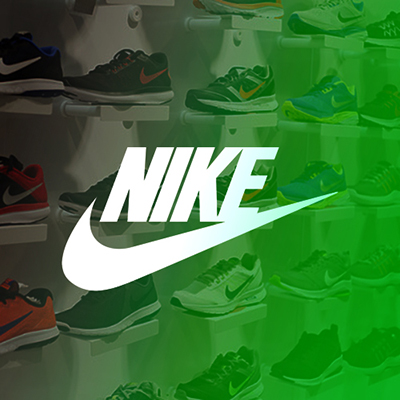
CONSUMER PACKAGED GOODS
Nike
WHY THEY MADE THE LIST // Nike’s relationship with voice centers around its top selling product category, shoes. Using Google Assistant, shoppers can chat with Nike’s digital performance expert, Nike Coach, to find the perfect sneaker for their workout routine. Taking it a step further, as of this month, Apple’s Siri voice assistant can tighten and release the laces on Nike’s new Adapt Huarache sneakers. Nike’s FitAdapt software and Nike Adapt app turn the shoes into another voice-controlled Internet of Things device. Nike has also won a few awards for their voice initiatives. A collaboration between Nike, R/GA and RAIN introduced a real-time voice assistant sale of a new sneaker model during an NBA basketball game in February. The campaign earned three Cannes Lions awards: bronze lions in Creative eCommerce, Excellence in Brand Integration, and Sponsorships and Use of Integrated Media. The $350 shoes were sold out in six minutes offering a good example of how voice shopping removes friction from the buying process. Nike is proving to be adept at embracing voice from several angles simultaneously: consumer engagement, product integration, and voice commerce. This portfolio approach aligns voice assistant technology with specific company campaigns and goals.
VOICE APP DEVELOPER: R/GA, RAIN
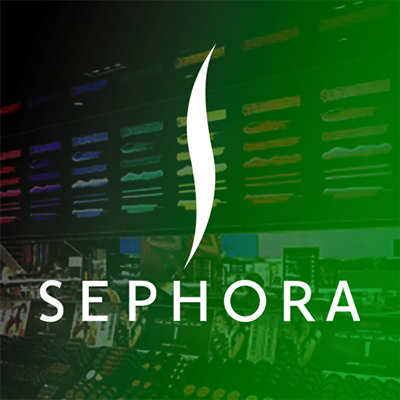
Health & Beauty
Sephora
WHY THEY MADE THE LIST // Beauty chain Sephora introduced one of the first Actions for Google Assistant in 2017, initially allowing users to book beauty services, play quiz games, and listen to beauty podcasts. Today, Google Assistant users can shop Sephora, and Google Home users can even use the Sephora Skincare Advisor feature to find nearest stores, get skin care tips, and to determine their skin type. Sephora and Google partnered once again during the 2018 holiday season to bring consumers beauty-specific commands and YouTube integration using Google Nest Hub to play any of Sephora’s video makeup tutorials. The campaign originally launched in ten Sephora flagship stores where shoppers could enjoy a “Dream Vanity” experience. Other brands can learn from Sephora’s integrated approach behind its voice assistant strategy. The company didn’t just launch a voice app. Instead, Sephora used the voice assistants as a channel to engage consumers around its skin care educational materials (including both voice-only and multimodal engagements), created in-store experiences, and made it easier for consumers to locate a Sephora store. To emphasize these benefits further, they even sell the Nest Hub smart display on their website.
VOICE APP DEVELOPER: Sephora, Assist

HEALTH & BEAUTY
Zyrtec
WHY THEY MADE THE LIST // In Spring 2017, just in time for allergy season, allergy medicine company Zyrtec launched an Alexa skill that shares the daily pollen count for a user’s location. Over time the Zyrtec AllergyCast skill can also tell users which forms of pollen they are most sensitive to. The skill does this by asking how the person is feeling each day and records which pollen counts were high at that time. Eventually, Alexa can provide a list of which pollens have the largest impact on a user’s well-being. By using the skill as a tool to help seasonal allergy sufferers, Zyrtec seems like a brand users can trust which should only help sales overall. And, it gives the company the ability to provide a one-on-one, personalized experience for its consumers. Think of it as daily alone time between a brand and a consumer. Isn’t that what every brand wants to have with its customer base? The awareness of pollen susceptibility creates an obvious opportunity to promote Zyrtec’s products, but it also could enable consumers to use those products more effectively. That alignment between pollen sensitivity and using products as they were intended may make consumers happier with the drug and less likely to apply it incorrectly and assume the product doesn’t work for them. In addition, the Alexa skill offers Zyrtec the opportunity to collect more data about consumer allergy sensitivity that would be otherwise unavailable. That information could, in turn, help the brand better align its product development and marketing activities with specific consumer sensitivities. This capability can also be deployed on the web and in mobile apps, but if you really want daily engagement without burdening a consumer to take a lot of extra steps, voice is the lowest-friction engagement option.
VOICE APP DEVELOPER: Johnson & Johnson

FOOD & BEVERAGE
DIAGEO
WHY THEY MADE THE LIST // British alcoholic beverage company Diageo is at the forefront of voice adoption and has invested in many voice-based applications for its brands over the last few years. “We realize that the voice ecosystem is in its early days, but we are determined to continue to test and learn and explore where we can use voice to create great experiences for our consumers,” said Diageo’s head of digital innovation Benjamin Lickfett. The company’s Johnnie Walker brand was the first to experiment with voice launching an Alexa skill tasting experience in September 2016. This skill walked users through a Johnnie Walker tasting experience. Diageo’s popular website, The Bar, inspired another Alexa skill with the same name in 2017. Designed for the Echo Show, The Bar skill is intended to serve as a user’s personal bartender by recommending cocktail recipes and teaching mixologist techniques. In 2018, Diageo also launched the Happy Hour skill which offers consumers another way to engage with Diageo brands. Diageo took additional steps in December 2018 to connect with consumers by promoting its Scotch whiskey brand Talisker using an Alexa skill called Talisker Tasting Experience. Diageo is showing other companies with multiple brands how they can both showcase individual brands using voice apps as well as create voice-interactive touchpoints focused on categories that offer the opportunity to highlight multiple brands at once.
VOICE APP DEVELOPER: VaynerMedia, Isobar

FOOD & BEVERAGE
E. & J. Gallo
WHY THEY MADE THE LIST // Apothic Wines are among the most distinctively branded and popular wines among millennial consumers. E. & J. Gallo wanted to create an at-home experience that could deepen consumer engagement with the brand, educate current customers about other Apothic wines, and induce trial of multiple varietals. The original solution dubbed Flight Night employed a Google Assistant Action that walked users through a guided wine tasting that included four steps with commentary specific to each varietal. Users could taste a single wine, or multiple wines, and the Action customized the experience for each wine and session. Apothic Wines was multimodal from the start with Google Assistant on smartphones and smart speakers. It was voice-first, but not voice-only. The Google Action also included soundscapes with different music associated with each wine to emphasize that varietal’s unique character. An Alexa skill was later added to extend consumer reach. The native assistant voice was also replaced by a voice actor commonly used as the Apothic spokesman and known as the Alchemist. E. & J. Gallo’s Apothic Wines saw an opportunity to engage consumers in an immersive experience with each session lasting up to 12 minutes that could serve as a platform to promote its growing product line and seasonal releases. It is a good example of how voice apps can support specific seasonal campaigns as well as establish a foundation for long-term customer engagement.
VOICE APP DEVELOPER: XAPPmedia
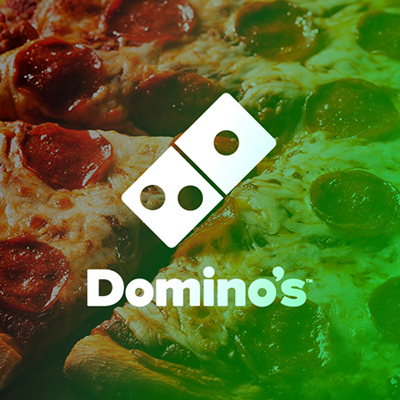
QUICK SERVICE RESTAURANTS
Domino’s
WHY THEY MADE THE LIST // Domino’s is famous for being one of the early custom skills for Amazon Alexa and maybe the first that directly involved a commercial transaction. The pizza company goes well beyond most advertisers’ definition of omnichannel marketing and Alexa is just one of its digital channels. Ordering is available through: Amazon Alexa, Google Home, Domino’s Zero Click app, Dom the Domino’s voice assistant in the Domino’s App for iPhone and Android, Slack, Facebook Messenger, text message, smart watches, Twitter, Ford SYNC, and Samsung Smart TV. The company’s CEO even offered partial credit to the voice assistant commerce strategy for beating its earnings projections in early 2017. The aspects of Domino’s voice strategy that other brands should pay attention to include its omnichannel ordering, focus on voice commerce from the beginning, and the implementation of its own, branded assistant within its mobile app. Custom, branded voice assistants aren’t just for banks and media companies. They can be a concierge for any brand looking to make it easier for consumers to engage with their products and services.
VOICE APP DEVELOPER: Domino’s Pizza, LLC

QUICK SERVICE RESTAURANTS
Starbucks
WHY THEY MADE THE LIST // Starbucks is at the forefront of voice commerce adoption. The coffee giant launched voice ordering on its mobile app and through Amazon Alexa in early 2017. The reorder skill makes ordering your favorite drink a very quick process, which is meaningful to Starbuck regulars as the in-store lines are known to be long. Ford made news in 2017 when it announced Starbucks could be ordered through Alexa while driving. The following year Starbucks made news by enabling Korean coffee drinkers to order by voice through Samsung Bixby, making it the first retailer to utilize Bixby for ordering and payment. Continuing the East Asia expansion, last week Starbucks launched voice ordering within Alibaba’s smart speaker, Tmall Genie. That initiative also includes a special edition Starbucks-branded smart speaker complete with a “Bearista” bear in Starbucks garb on the top. The device is simply a variant of the Tmall Genie smart speaker with Starbucks branding but reflects the first known use of a branded speaker in this segment. Much like 1-800 Flowers, Starbucks is committed to being wherever consumers happen to be using digital products and making the ordering process simple. From the beginning, Starbucks saw voice assistants as a conduit to make it easier for users to order with less emphasis on engagement. With that said, the company also enables voice app users to listen to its well-known music collections so they can have the in-store experience even while on-the-go with their coffee.
VOICE APP DEVELOPER: Starbucks Coffee Co.

HEALTHCARE
Boston Children’s Hospital
WHY THEY MADE THE LIST // Boston Children’s Hospital launched the KidsMD Alexa skill in early 2016 making it a pioneer among healthcare providers experimenting with voice assistants. Devin Nadar, partnerships manager for innovation at Boston Children’s Hospital, told Voicebot, “The goal of KidsMD is to provide a trusted source of pediatric education. We wanted to engage more with consumers and provide decision support tools to help parents and patients better understand common symptoms.” This was followed by a collaboration between Boston Children’s and Seattle Children’s Hospitals in September 2018 for a new skill called Flu Doctor. This skill was designed to answer questions about flu symptoms, treatments, and risks and the content was reviewed by the CDC and the American Academy of Pediatrics before launching. When Amazon launched its HIPAA compliant Alexa skill service, Boston Children’s was there again with a new healthcare skill based on the hospital’s program for Enhanced Recovery After Surgery (ERAS). The skill is called My Children’s and enables parents and caregivers of children in the ERAS program to provide their care teams with updates on recovery progress and receive information regarding their post-op appointments. Boston Children’s has taken an expansive view about how voice assistants can help them better inform their communities about health topics, services at the hospital, and even engaging with their care providers post surgery. Other organizations can learn from Boston Children’s portfolio approach to voice technology adoption.
VOICE APP DEVELOPER: Boston Children’s Hospital

EDUCATION
Britannica
WHY THEY MADE THE LIST // Britannica launched a voice-activated game called Guardians of History under its Britannica for Kids brand this summer, becoming one of the first companies to combine educational content, gaming and audio. The Guardians of History skill harvested content from Britannica’s deep historical archives as well as its online encyclopedia for kids to teach children about the Ancient Greece time period from a fictional character’s perspective for its first episode. Britannica took the role-playing game to the next level by creating custom sound effects and used four different voice actors for the various characters to fully immerse the player in the historical time period. The game is available on both Amazon Alexa and Google Home and on multi-modal devices like the Echo Show and Nest Hub which feature custom illustrations to further immerse players into Ancient Greece. The Guardians of History voice app also demonstrates that voice-first experiences can engage the user longer than just a few minutes. The game time can take up to 40 minutes, making it one of the longest playtimes for a voice app. This is also ambitious considering its target audience has a lower than average attention span, but, according to enthusiastic reviews from parents, their kids enjoyed it throughout. The interactive game features eight different endings which can also increase the app’s retention rate. The Guardians of History voice app demonstrates how a children’s digital-encyclopedia brand can use voice technology to stay relevant and further engage its target audience while also achieving its main mission: educating kids.
VOICE APP DEVELOPER: Moonshot by Pactera

